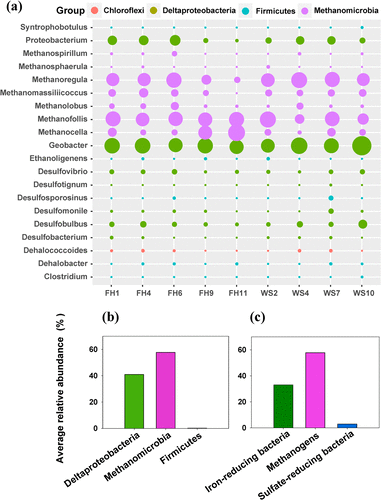Recently, Professor Liu Yurong’s research group of the College of Resources and Environment in HZAU published two articles on mainstream journals in environmental microbiology and environmental science. One was published on Microbiome which was entitled “Consistent responses of soil microbial taxonomic and functional attributes to mercury pollution across China”, and the other entitled “Unraveling microbial communities associated with methylmercury production in paddy soils”, was published on Environmental Science & Technology.
According to the present situation of mercury pollution and microorganisms in the two articles, mercury is a toxic pollutant which can be transported globally, posing a considerable threat to human health and ecosystem. In the Action Plan for Soil Pollution Prevention and Control, China has put heavy metal mercury as one of the priority pollutants to be monitored. Soil microbes can convert inorganic mercury to methylmercury. Being highly neurotoxic, methylmercury can concentrate and amplify in the food chain, and the foods contaminated with methylmercury threaten human health. The group has found that the methylmercury accumulating in rice in some areas which mainly comes from the methylation of inorganic mercury by soil microbes. Therefore, the research of microbial methylation of mercury in soils is of great significance for the environmental risk control of mercury in soil.
In addition, the research group also elaborated the research status and problems. On the one hand, knowing little about the microbial communities involved in mercury methylation in the soil has hampered the prevention and remediation of mercury pollution in soil. On the other hand, soil mercury pollution not only affects the growth of aboveground crops and food security, but also affects the diversity and structure of soil microbial communities, thus affects the biogeochemical cycle in soil and the service function of the ecosystem. The research group has revealed the impact mechanism of long-term soil mercury pollution on soil microbial communities and functional genes by multi-omics and other approaches (Figure 1), cooperating with the Research Center for Eco-Environmental Sciences of Chinese Academy of Sciences, the Oak Ridge National Laboratory, the University of Colorado, Zhejiang University and other institutions. And based on microbial community network analysis, the group not only explained the impact of soil mercury pollution on the main microbial ecological community, but also shed light on the major microbial communities involved in inorganic mercury methylation in paddy soils and their relative abundance (Figure 2). Besides, the results also show that iron-reducing bacteria and methanogens may be the main drivers of methylmercury formation in paddy soils. The results can provide significant theoretical guidance for the environmental risk control of heavy metals in soil and the formulation of soil remediation strategies.

Figure 1 Response of soil microbial ecological communities to mercury pollution

Figure 2 Major mercury methylation microbial communities in paddy soils
The research was funded by the National Natural Science Foundation of China and the talent introduction project of HZAU.
Source: http://news.hzau.edu.cn/2018/1107/53030.shtml
Translated by Ouyang Liting
Supervised by Xie Lujie